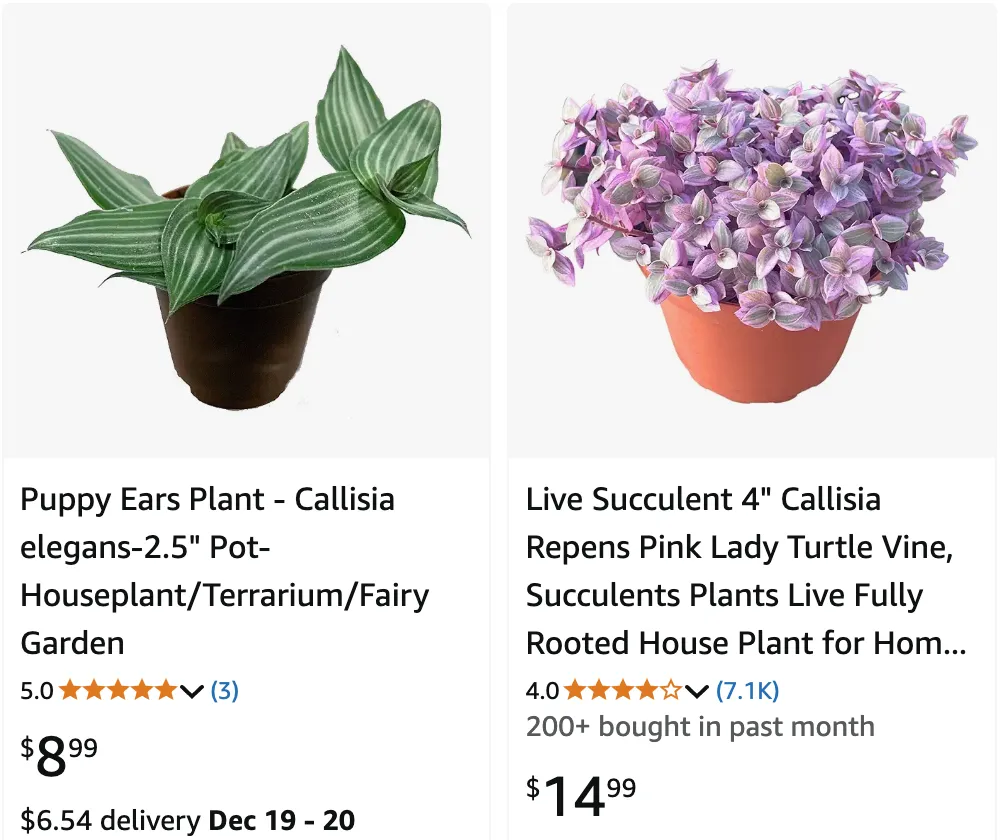
May 14 – Callisia
"Callisia, the wandering plant, defines May 14."
Callisia represents exploration and curiosity. You are a wanderer at heart, constantly seeking new adventures. Like this plant, you thrive in spreading your roots far and wide.
Callisia: A Genus of Hidden Gems
My name is Ferb Vu, and I’ve always been drawn to the subtle beauty of creeping plants. There’s something captivating about the way they trail and spread, bringing life and vibrancy to otherwise overlooked corners. Among my favorites is the genus Callisia, a group of often-unassuming plants that possess a quiet charm and surprising versatility.
The name Callisia itself is derived from the Greek word “kallos,” meaning beauty, and while they may not boast the showy blooms of orchids or the dramatic foliage of tropicals, their beauty lies in their simplicity and resilience. Native to the Americas, these plants are members of the Commelinaceae family, which also includes the more familiar spiderworts and wandering Jews. But unlike their flamboyant cousins, Callisia species tend to have smaller, more delicate flowers and a creeping or trailing growth habit.
Diverse Forms and Functions
What truly fascinates me about Callisia is the sheer diversity within the genus. From the tiny, creeping Callisia repens with its coin-shaped leaves to the more robust Callisia fragrans with its lance-shaped foliage and fragrant white flowers, there’s a Callisia for every taste and purpose. Some, like Callisia navicularis, are succulents, adapted to arid environments with their thick, boat-shaped leaves. Others, like Callisia soconuscensis, thrive in humid conditions, their lush green foliage cascading over rocks and branches.
This diversity extends beyond their appearance. Callisia plants have a long history of use in traditional medicine, particularly in Mexico and Central America. Callisia fragrans, also known as the basket plant or chain plant, is believed to have anti-inflammatory and antimicrobial properties. Its leaves are used to treat skin ailments, burns, and even internal infections. While scientific research on the medicinal properties of Callisia is still ongoing, anecdotal evidence suggests that these plants may indeed hold valuable therapeutic potential.
A Gardener’s Delight
Beyond their medicinal uses, Callisia species are simply a joy to grow. They are incredibly low-maintenance, tolerating a wide range of conditions and requiring minimal care. Most prefer bright, indirect light and well-draining soil, but they can adapt to shadier spots and even tolerate some drought. Their trailing habit makes them ideal for hanging baskets, terrariums, and even as ground cover in warmer climates. They are also easily propagated from cuttings, making it simple to share with friends or expand your own collection.
One of my favorite things to do is to experiment with different ways to display my Callisia plants. I have some trailing from shelves, others cascading down the sides of pots, and even a few tucked into kokedama moss balls. Their versatility allows for endless creativity, and their resilience means they can thrive in even the most unexpected places.
A Closer Look at the Species
- Callisia cordifolia (Sw.) Andiers. & Woodson
- Callisia filiformis (M.Martens & Galeotti) D.R.Hunt
- Callisia fragrans (Lindl.) Woodson Plant FAQs: Callisia Fragrans
- Callisia gentlei Matuda
- Callisia gracilis (Kunth) D.R.Hunt
- Callisia graminea (Small) G.C.Tucker
- Callisia hintoniorum B.L.Turner
- Callisia insignis C.B.Clarke
- Callisia laui (D.R.Hunt) D.R.Hunt
- Callisia micrantha (Torr.) D.R.Hunt
- Callisia monandra (Sw.) Schult. & Schult.f.
- Callisia multiflora (M.Martens & Galeotti) Standl.
- Callisia navicularis (Ortgies) D.R.Hunt
- Callisia ornata (Small) G.C.Tucker
- Callisia repens (Jacq.) L. Plant FAQs: Callisia Repens
- Callisia rosea (Vent.) D.R.Hunt
- Callisia soconuscensis Matuda
- Callisia tehuantepecana Matuda
- Callisia warszewicziana (Kunth & C.D.Bouché) D.R.Hunt
A Growing Appreciation
As I continue to learn more about Callisia, my appreciation for this humble genus only deepens. These plants are not just beautiful and easy to care for; they are also a testament to the resilience and adaptability of nature. They thrive in diverse environments, offer potential medicinal benefits, and bring a touch of understated elegance to any space. Whether you’re a seasoned gardener or just starting your plant journey, I encourage you to explore the world of Callisia and discover the hidden gems within this fascinating genus.
If i die, water my plants!



